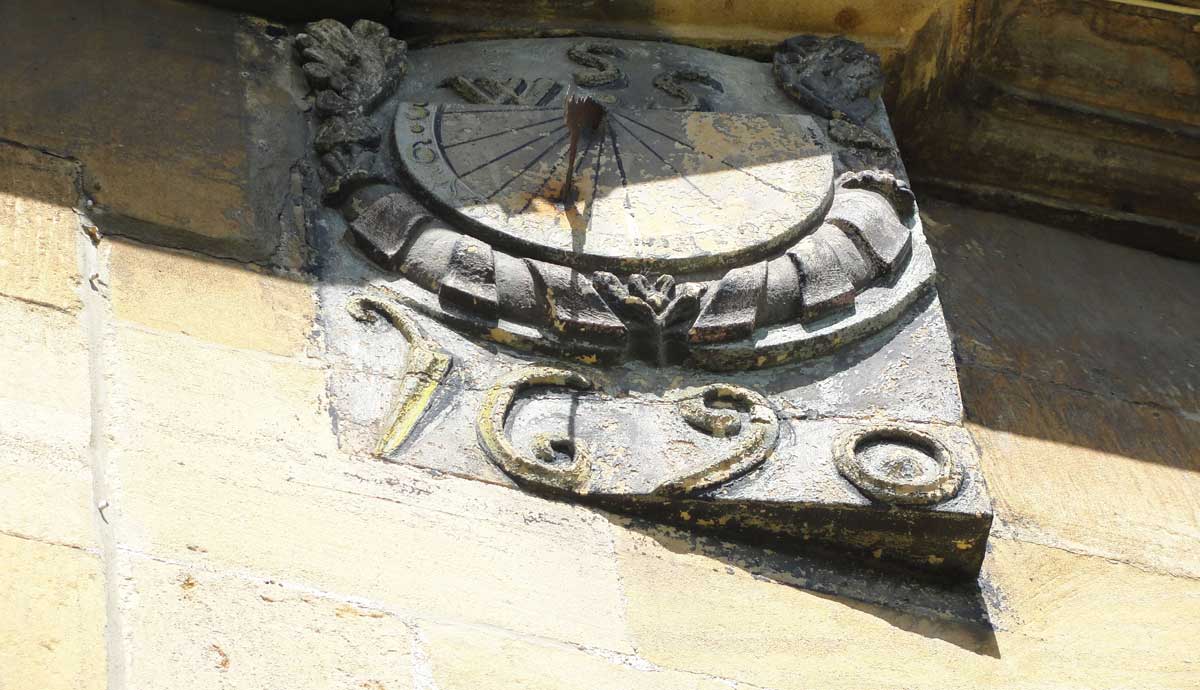 Source: 16th-century sundial in Chipping Campden. © Lonnie Colson.
Source: 16th-century sundial in Chipping Campden. © Lonnie Colson.
If you were to ask a modern reader “the hour,” they would likely glance down at their ubiquitous wrist watch and tell you the time down to the minute. We have become accustomed to the fact that the day begins and ends at midnight. In North America and Europe, we even use daylight savings in an attempt to maximize the amount of sunlight during our waking hours. It is a notion that would have been wholly incomprehensible to the average fifteenth-century man.
By 1436, the year in which The Second Great Mortality is set, mechanical clocks keeping a standardized hour had begun to appear in large cities such as London. However, for residents of the fictional Colleville situated in a remote corner of Gloucestershire, the day is divided into twelve equal hours beginning at sunrise and ending at sunset. Likewise, the night is also thought to be divided into twelve segments. It would be several more centuries before the development of minutes and seconds in timekeeping.
Sundials can be seen on the sun-ward side of the tallest buildings and towers. The bells of Saint Wystan’s do not chime every hour of the day and night, but instead only mark the eight canonical hours of prayer (see the chart below). As the day lengthens and shortens, so do the hours of the day. At the onset of Sir Richard’s tale, each hour of the day is short, equating only 39 minutes to the modern reader. The concept of timekeeping in minutes and second would not develop for several more centuries.

